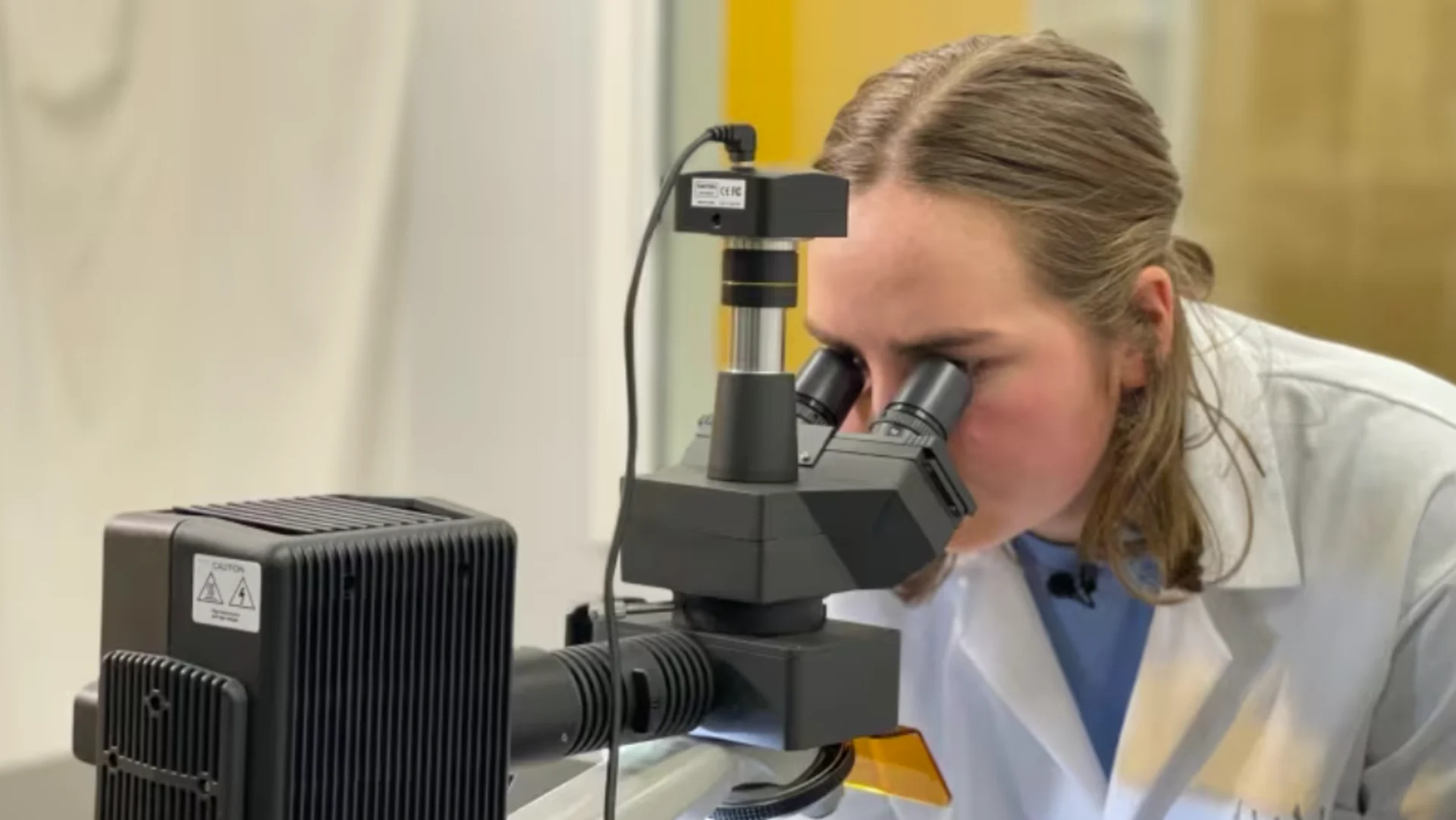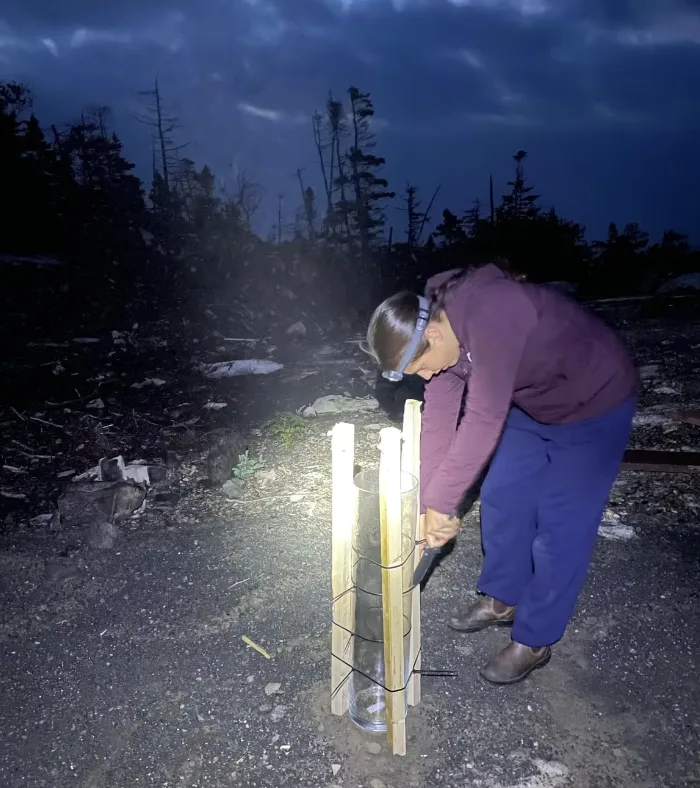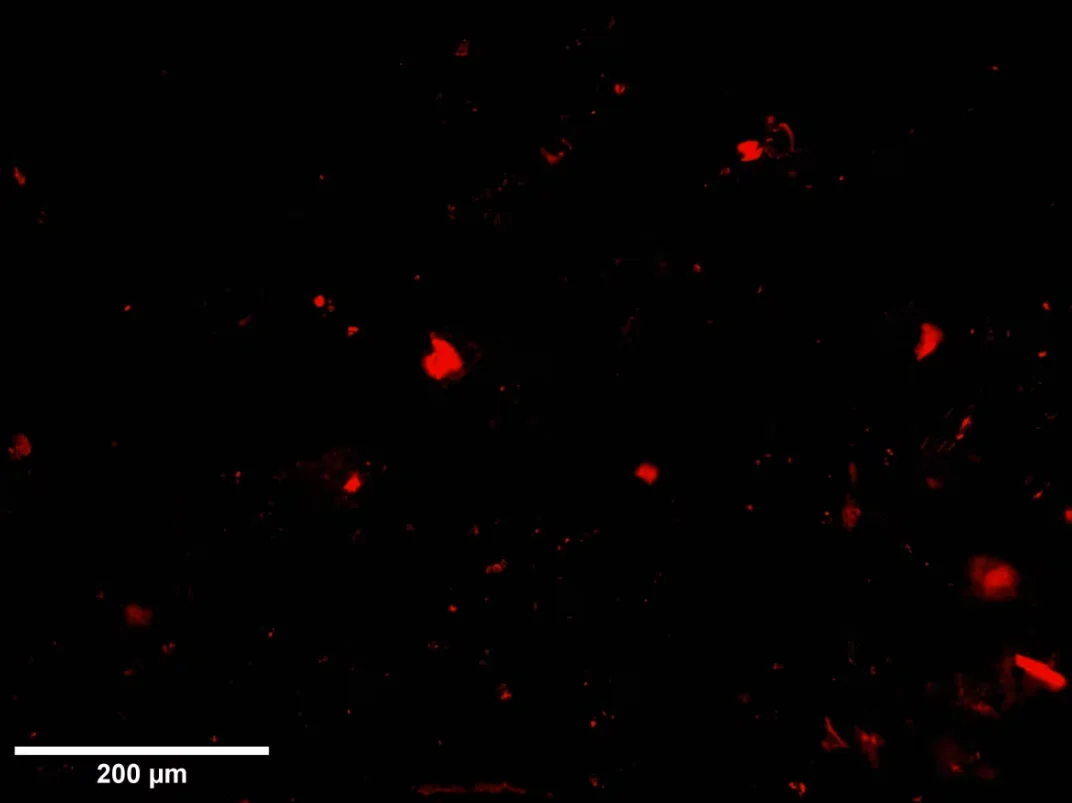
Hurricane Larry proved ocean microplastics can be swept inland as air pollution
As Hurricane Larry lashed Newfoundland in 2021, university students from Halifax headed to a rural area in its track to find out whether the ocean might whip microplastics up into the atmosphere then transport them by air to otherwise pristine communities.
The results, you could say, blew their socks off.
"It was such, like, an astonishing result that we weren't really expecting," said Anna Ryan, a Dalhousie University environmental science masters student and the study's lead researcher.
To test their theory, the 24-year-old and another student set out a large glass cylinder — essentially trying to collect air — near St. Michaels, a community of less than 300 on Newfoundland's Avalon Peninsula. The vessel was in place for six hours at a time, collecting samples from before, during and after the September storm.
SEE ALSO: A strange, historic 2023 Atlantic hurricane season finally ends
The highest concentration of microplastics were found in samples collected during the hurricane: more than 100,000 particles per square metre per day, an amount Ryan called far higher than has been found in any other study of atmospheric microplastics. Their study was published last week in Nature, a leading science journal.

Amber LeBlanc, a Dalhousie student who helped Ryan collect samples, checks a large glass cylinder set up near Saint Michaels, N.L., during Hurricane Larry. (Submitted by Anna Ryan)
Microplastics are tiny pieces of plastic, less than five millimetres in length, that come from the degradation of larger plastic products or the shedding of particles from water bottles, plastic packaging and synthetic clothes.
Ryan said the ocean is often thought of as the "ultimate sink" for microplastics. But that may not be where the plastics stay.
She said microplastic pollution is a growing concern that has been detected in all environments around the globe. It is a risk to human and animal health, as well as overall ecosystem health, though the extent of that harm is still not well understood.
DON'T MISS: Giant seamount found in waters off Guatemala nearly 2X the size of Burj Khalifa
The particles Ryan's team collected were so small they cannot be seen with the naked eye, about 20 to 30 times smaller than the width of human hair, she said.
"You could say that the smaller they are, the bigger the risk they are because they're so small, they're really easily ingested or inhaled," she said, during a recent interview at a Dalhousie lab.

A sample of the microplastics collected by Dalhousie students durring Hurricane Larry, as seen through a microscope. (Submitted by Anna Ryan)
Her research paper notes Hurricane Larry, which made landfall as a Category 1 storm, followed a track far offshore of the eastern seaboard of the United States and Eastern Canada, maintaining its trajectory over the ocean before making landfall in Newfoundland.
This made the weather event a unique opportunity for the researchers.

Anna Ryan collected samples of microplastics near Saint Michaels, N.L., a sparsely populated location with no major industry or other obvious sources of microplastics. She says even the most pristine places now have plastics in the air. (Submitted by Anna Ryan)
The hurricane did not travel close to any major urban areas, which are generally considered a major source of airborne microplastics.
It did, however, pass over ocean areas — including the North Atlantic "garbage patch" located south of Newfoundland —where currents trap high concentrations of plastics in the surface waters, the study says.
Microplastics were detected in all 11 samples collected throughout the duration of the experiment.
The levels found before and after the hurricane were relatively similar — an average of 20,000 particles per square metre per day. By contrast, the peak levels found during the hurricane were more than five-and-a-half times that amount.
Few studies like it worldwide
Tony Walker, a professor in Dalhousie's school for resource and environmental studies and co-author on the paper, says there are few studies like it worldwide.
In 2020, there was a study of atmospheric microplastics in the South China Sea as a result of Typhoon Sinlaku, and another in 2021 during monsoon rains in Iran.
Neither found near the level of microplastics as did the examination of Hurricane Larry.
Walker said Ryan's research has further illustrated microplastics are in "every single environmental compartment on Earth," and that its publication in a prestigious journal such as Nature is significant.
"I think that really just signals the importance of the work, the novelty of the work," he said.
Similar study underway on post-tropical storm Fiona
Another student, Justine Ammendolia, who is doing a PhD at Dalhousie, is currently studying how post-tropical storm Fiona affected microplastics in the atmosphere last year.
She collected her samples by tying a kitchen pot to her balcony in the south end of Halifax.

Dalhousie PhD student, Justine Ammendolia, is currently analyzing samples of microplastics she collected from the atmosphere during post-tropical storm Fiona. (Eric Woolliscroft/CBC)
Her work is not yet complete, but she describes what she's found so far as "extremely exciting and also disturbing."
She found traces of 14 different types of microplastics.
She said because she and Ryan followed similar methods they'll be able to make comparisons between the two storms — one in an urban setting and one in a rural setting — when she's finished analyzing the results.
Both Ammendolia and Ryan say the best solution is to limit single-use plastics to prevent more of them from ending up in the environment in the first place.
Studies like theirs are important because they provide the data that is needed for change to happen, Ammendolia said.
"We can't make bigger actions like policy changes nationally to cut back on plastic pollution if we don't know how bad it is at a smaller level."
Thumbnail image courtesy of Eric Woolliscroft/CBC News.
This article, written by Kayla Hounsell, was originally published for CBC News.





